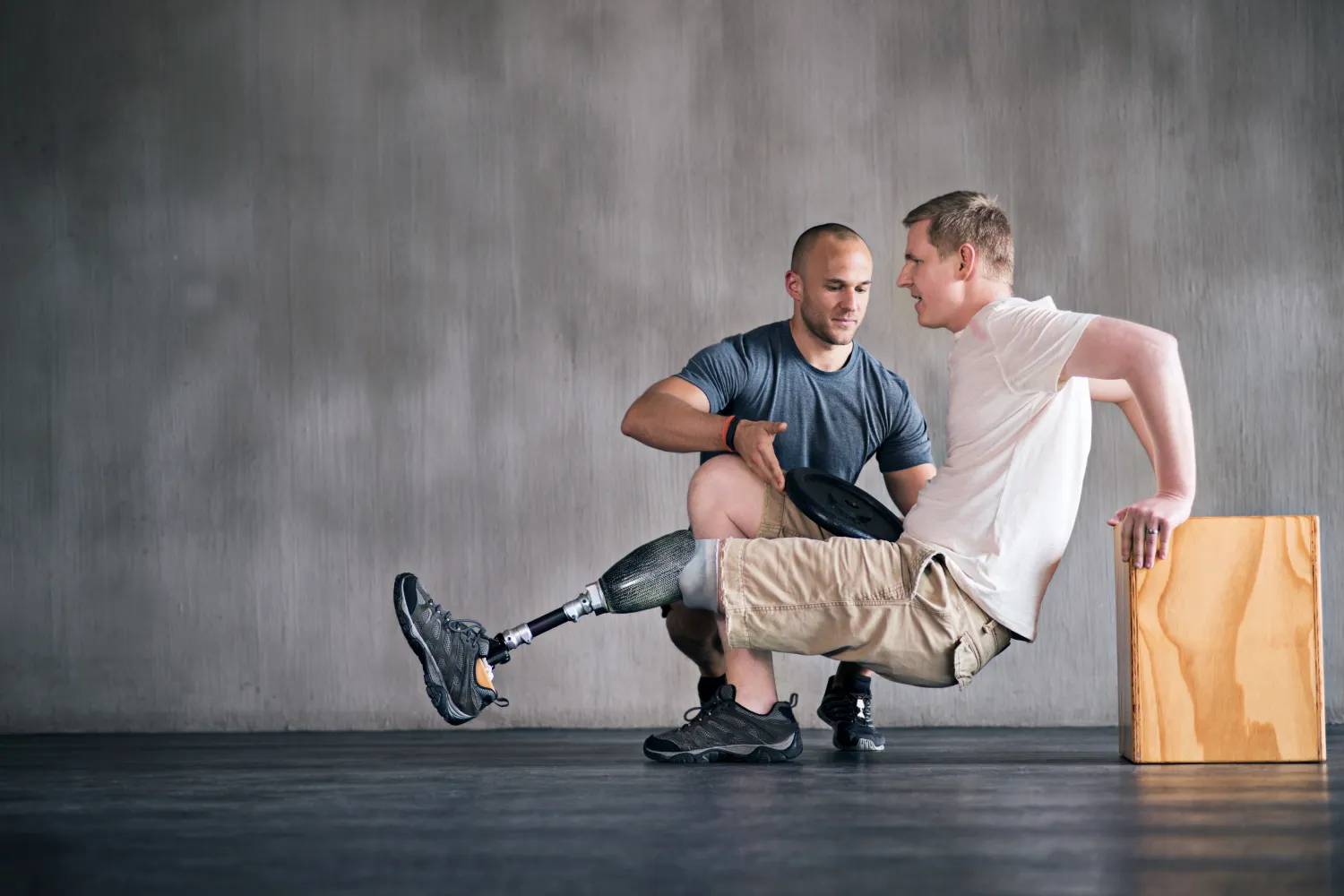Traumatic amputation is one of the most tragic injuries a person can experience in the workplace or in an accident or physical assault. And so, if you or a loved one has experienced a traumatic amputation as a result of an accident or injury and someone else may be at fault, please know that you may be entitled to financial compensation.
Moreover, the qualified New York City personal injury attorneys at Schwartzapfel Lawyers are ready to fight — and win! — for you. Call us now at 516-342-2200 or visit us online to schedule your free consultation today.
What Is Traumatic Amputation?
Traumatic amputation typically occurs under circumstances that are beyond the attending doctor’s control.
That said, if amputation of a limb is necessary to preserve someone’s life or health, qualified surgeons will usually perform amputation surgery under anesthesia in a sterile medical setting. To this end, the wound should be closed properly, and if possible, doctors should consider performing the operation in a way that should make it easier for the patient to receive a functional prosthesis. Note: This often occurs due to complications of vascular diseases and conditions that affect blood flow.
In contrast, traumatic amputation is the partial or total avulsion of a part of the body as the result of a violent accident or assault. It’s also called “disarticulation” if the amputation occurs between joint surfaces. Traumatic amputation can lead to extensive tissue and bone damage, as well as infection from the presence of bacteria where the accident took place.
Traumatic amputation is one of the most serious workplace injuries affecting construction workers or machine workers who use heavy machinery or work in dangerous conditions as a routine part of their jobs.
If you or a loved one has experienced a traumatic amputation, please don’t wait and leave your future to chance. Instead, act now and call the experienced New York State personal injury attorneys of Schwartzapfel Lawyers at 516-342-2200 today.
What Are The Most Common Causes Of Traumatic Amputation?
Most people don’t encounter risk factors for traumatic amputation in their everyday lives. Traumatic amputation is very rare. It’s usually the result of defective products or machinery, severe automobile accidents, or construction site injuries.
Defective Product Injuries
Defective products like power tools, kitchen appliances, and lawn care appliances can lead to traumatic amputation. Broken or inadequate safety features that fail to prevent accidental contact with blades or motors can jeopardize someone’s life. Additionally, defective products with motors or fuel can sometimes explode, further contributing to the risk of traumatic amputation.
Motor Vehicle Accidents
Traumatic amputation can also occur during motor vehicle accidents when the collision causes car parts to crush drivers or passengers. If the force of the crash is great enough or if the debris is sharp enough, the wreckage can slice through bone. Note: It can sometimes take first responders a long time to safely access a wreck and provide assistance to victims in a vehicle, and every second increases the risk that injuries could worsen.
Construction Site Injuries
Construction sites can be dangerous places to work. That’s why there are so many safety codes and regulations dictating how a construction site should be managed and maintained. Tools or machinery that have malfunctioned or are improperly maintained place workers at a substantial safety risk. Falling debris can also pose a substantial hazard to workers on a job site.
The knowledgeable New York State personal injury lawyers at Schwartzapfel Lawyers have over (150) years of combined experience fighting for New Yorker construction workers who have been injured on the job. Call us now at 516-342-2200 or schedule your free case evaluation online to learn how we will fight to recover all the money and benefits you’re owed from a traumatic amputation.
What Happens After Traumatic Amputation?
The damage caused by a traumatic amputation isn’t always permanent. Unfortunately, it isn’t always controllable and may lead to complications as time goes on. Generally, traumatic amputation can lead to three (3) different outcomes, consisting of:
Loss Of Limb
Traumatic amputations that cause excessive damage, like crush injuries, usually involve permanent loss of a limb. Doctors may need to amputate more of the limb to remove severely damaged tissue and improve recovery outcomes or to improve the chances that a patient will be able to utilize a prosthetic with their residual limb.
Worsening Injuries
The risks for complications rise with the severity of the traumatic amputation and the limb that was amputated. For example, you’re less likely to experience severe or worsening complications if you lose your smallest toe than if you lose your leg above the knee.
In this way, among the worst possible outcomes of a traumatic amputation are postoperative wound healing complications or worsening of an injury. Some traumatic amputees face complications like infection or difficulty healing that can make additional surgery necessary.
Note: In certain cases, surgeons may have to amputate more of the residual limb to improve healing or remove dangerous tissue that could cause widespread infection.
Successful Recovery With Replantation
Traumatic amputations almost always lead to extensive soft tissue and bone damage. Moreover, amputated body parts are often unsalvageable. Still, there are incidences where surgical intervention can possibly save the affected limb.
If limb salvage is a feasible treatment option, care providers should always make a reasonable attempt. It all depends on the state of the amputated limb, the time it took to recover the limb and arrive at the hospital, and the state of the area where the limb was severed from the body.
Surgeons regularly reattach smaller appendages, like fingers or fingertip joints, if the tissue isn’t damaged beyond repair and medical treatment is sought immediately. The success for thumb reattachment surgery is approximately 50% while reattaching a pinkie boasts a nearly 100% success rate. Some people require physical therapy to get full mobility back after acute care, and most people experience little to no trouble after the healing process is complete.
Reattaching an arm or a leg is significantly different. These operations are riskier, time-consuming, and complicated. It’s rare for a large limb to be successfully reattached after a traumatic amputation, but there have been successful long-term cases of replantation following traumatic amputation.
What Are The Long-Term Consequences Of Traumatic Amputation?
With traumatic amputation, no two cases are identical. Some people are able to experience a satisfactory recovery following traumatic limb amputation. As such, the quality of follow-up care trauma patients receive from a healthcare provider is critical for their recovery. Unfortunately, many people won’t experience the best-case scenario.
Phantom Limb Pain
Phantom limb pain occurs when the brain believes it’s experiencing pain in a limb that has been amputated. Even if you’ve had a lower extremity amputated, it can still remain within the map of your body and brain. Your brain’s pathways may not understand that your lower limb is gone but may have an understanding that something is wrong. This can lead to the perception of pain signals radiating from the place where your limb was prior to your lower extremity amputation.
Chronic Pain
Traumatic extremity injuries can cause long-term musculoskeletal pain and damage to blood vessels at or around the site of amputation. Complications like heterotopic ossification, a process where bone growths form on a residual limb, can cause chronic pain that’s difficult to treat.
Negative Impact On Quality Of Life
Traumatic amputation, just like surgical amputation, can have a longstanding negative impact on your quality of life. Someone who has lower limb amputations, especially above-knee amputations, may never walk again. Amputations can inhibit your ability to work and earn a living, not to mention your ability to perform everyday tasks.
Post-Traumatic Stress
There are many misconceptions about post-traumatic stress and the types of events that can cause the condition to occur. Post-traumatic stress (PTSD) doesn’t strictly impact combat veterans or those who have experienced extreme physical harm. In fact, anyone who has endured a life-threatening injury or survived a terrifying accident can develop post-traumatic stress disorder, and there’s a prevalence of psychiatric disorders among amputees.
What Are My Legal Rights After A Traumatic Amputation?
If you or a loved one has been involved in an accident or experienced an injury that caused traumatic amputation, you should know that you may be entitled to financial compensation. Most people who experience traumatic amputation have significant surgical bills, medical care bills, and expenses from visiting a prosthetist.
Prosthetic limbs and assistive orthotics can be life-changing for someone with a full or partial amputation, but they’re often very expensive. You may not be able to reasonably afford the necessary devices on your own, and the party responsible for your traumatic amputation should have to pay for the damage they’ve caused you.
The award-winning New York State personal injury attorneys at Schwartzapfel Lawyers have over (150) years of combined experience fighting for victims, and we’re ready to fight — and win! — for you. Call us now at 516-342-2200 for a free consultation and so much more.
Your future is too important to leave to chance. Allow us the honor and privilege of getting you all the money and benefits you deserve. Call now!
DISCLAIMER: Nothing on this page should be considered legal advice. You should seek the appropriate counsel your situation requires. For more information, call 516-342-2200 now!
Sources
Schwartzapfel Lawyers, P.C. | Fighting For You
Prognostic factors on survival rate of fingers replantation | National Library of Medicine
Long-term outcome following upper extremity replantation after major traumatic amputation | PMC
Orthotic and prosthetic devices in partial foot amputations | PubMed


















